Having white, nourished teeth is very important in our culture today.
When talking about leaving a first good impression, teeth are mentioned the first, because if people meet you for the first time, and you have yellow, crooked, aged or discolored teeth, they might get the impression that you don’t take care of yourself and personal hygiene isn’t your best attribute.
This is why the number of people using toothpaste for teeth whitening or strips or professional in-office whitening treatments is growing and the demand is higher than ever.
After all, who doesn’t like to have white sparkling teeth every time they smile? It’s is a sign of health, well-being as well as self – confidence.
But sadly enough, for some people no matter what they do, this is an impossible goal to reach.
No matter how many times they brush with the best toothpaste or undergo professional whitening procedures, stained, discolored teeth are what they are stuck with. Whether it’s from drinking coffee, tea or smoking or maybe as a part of a larger health problem like unhealthy gums or thinning enamel they cannot get rid of yellow teeth.
But what is really teeth whitening, and what is the best way to whiten your teeth? Our guide describes the teeth whitening process in-depth and helps you decide if this is what you need and how to pick the best method to shine white your teeth.

Teeth Whitening: Know First

Who Needs Teeth Whitening

Why Teeth Turn Yellow

Teeth Whitening Options

Professional Teeth Whitening

Natural Teeth Whitening

Effective Teeth Whitening

Whitening Risk: Do You Fear?

Teeth Whitening: How Long Last?

Teeth Whitening Products

Any Side Effects Of Teeth Whitening?

FAQ: Teeth Whitening
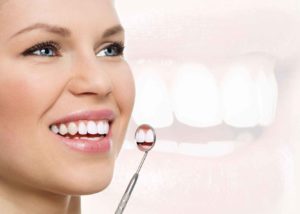 There are many teeth or gums diseases that will attack your teeth throughout your life no matter how much you take care of your health and hygiene.
There are many teeth or gums diseases that will attack your teeth throughout your life no matter how much you take care of your health and hygiene.
This isn’t necessarily a bad thing because modern medicine has solutions for them, but it is something you need to take into consideration when you want to get your teeth whitened.
So rather than heading to a cosmetic counter or a shopping market to get tooth whiteners, you should start with a dental checkup.
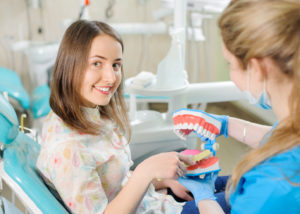
Your dentist will evaluate, diagnose and solve all your tooth decay, sensitive or cracked teeth problems, periodontal gum problems and infections gum because otherwise, you will feel certain discomfort and even situation worsening at times when you have your teeth whitened. This is because the process of teeth whitening aggravates the existing problems.
Also, you need to put into perspective that the whitening process alone doesn’t help with or protect against cavities or diseases like gingivitis.
In addition, dental checkups are also good because you can get professional advice on all the different options available to whiten your teeth, effectively and safely, and also tell you about the structure of your teeth and whether bleaching or whitening will work for you in the first place.
Choosing the right way of whitening your teeth is extremely important because everyone has a different reason as to why their teeth are yellow or discolored and stained.
Whether is from injury, stains from food or tobacco, maybe from an antibiotic treatment in the past or something else, a proper diagnosis is important, because otherwise, you will be wasting time and money with a possibility of getting other more serious dental problems in the future.
If you have any bridges, crowns, veneers or any type of bonding materials or tooth-colored fillings, you need to let your dentist know and check them up because, in contrary, the whitening won’t work.
Note of precaution: Health professionals and licensed dentists advise not to trust and undergo any over-the-counter, at-home tooth whiteners that are being advertised on television infomercials and the radio, advertising on websites or in the magazines and newspapers. They might be claiming that are 100% safe and effective, but they are doing those promotions for profit and no one can guarantee you that you will get results without side-effects.
Also without the proper care or supervision of a certified professional, no one is there to help or guarantee you the safety of the soft and hard tissues in the mouth.
The International Dentist Association says:
“It is a misnomer that whiter teeth are the same as healthy teeth since tooth color has very little to do with the health of the tooth. The consumer perception, though, is that white teeth equal a healthy mouth, and perception is a reality.”
So before rushing off to your doctor’s office, ensure that you are taking the proper dental care by brushing and flossing and regularly practicing natural homemade remedies like coconut oil pulling, baking soda, hydrogen peroxide, apple cider vinegar that have antiseptic protection and will destroy the bacteria that discolors your teeth.
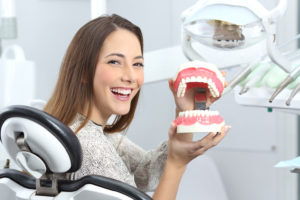
Whitening and bleaching are two different things when it comes to the chemicals these procedures use, the risks and the length of the effects afterward.
However, practice tells that whitening as a term on its own sounds a bit better, more nourishing than bleaching, so it’s a term more often used, even when it comes to using products that contain bleach.
Speaking of whitening, it is a term used for products that are there only to restore your teeth’s natural color of the surface of your teeth by using chemicals that remove dirt and debris. These teeth-whitening products will not go beyond your teeth’s color.
They will only bring back your natural shine and color. Bleaching, on the other hand, is a term used for products that are harsher on your teeth and used by professionals only. This is when the teeth are whitened beyond the natural white color.
These products contain one of the two main bleaching ingredients: carbamide peroxide or hydrogen peroxide.
To know what you are dealing with when bleaching your teeth professionally or at home, you need to know the difference between the two main chemicals in all bleachers: carbamide peroxide and hydrogen peroxide.
Namely, dentists for their in-office whitening practice prefer using hydrogen peroxide because it is a fast-acting and powerful treatment that yields anywhere from 10% to 40% results in teeth whitening.
However, contrary to hydrogen peroxide, Carbamide Peroxide is used for at-home teeth whitening treatments because the time isn’t limited and it is a slower acting chemical – less dangerous to your soft and hard tissue. This is because the carbamide is ⅓ of the strength of the hydrogen peroxide.
So at home, if you use a 15% solution of carbamide, it will roughly be like a 5% solution of the hydrogen peroxide your dentist will use on your teeth in-office.
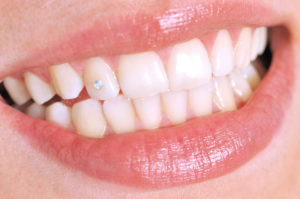
You should know that teeth whitening doesn’t work for everyone and for all types of teeth.
This is why we advised you previously to talk to your dentist before undergoing a procedure to whiten your teeth. The reason for this is that whitening and bleaching methods aren’t able to fix all types of discoloring.
For instance, yellow teeth absorb the bleach well and turn white after few treatments, but Brown won’t respond that well while gray-colored teeth won’t accept bleach at all.
Also as we mentioned, if you have any caps, bridges, fillings, crowns, and/ or veneers, you won’t be able to bleach your teeth as these artificial dental works don’t work with bleach.
Also, bleaching or whitening won’t be as effective with discolored teeth by meds or trauma. The ideal patients are people who have mildly discolored teeth.
Also, the previously mentioned intrinsic stains are harder sometimes impossible to bleach, compared to the extrinsic stains on a tooth that hadn’t undergone a root canal therapy.
But still, it’s worth to try because the intrinsic stains that appeared from the internal bleeding in the tooth cause yellow or brown stains in color and dentists claim they can whiten these without any problem.
However, if you suffer from bruxism or temporomandibular joint disorder (TMD) you shouldn’t bleach your teeth because the whitening agents will cause more damage to them.
Now that all the medical and chemical methods of teeth whitening are known to you, here are the reasons why teeth turn yellow and how to safely prevent this phenomenon in the first place.
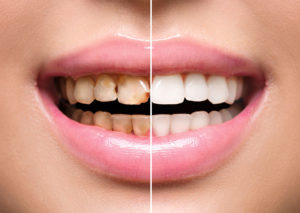 Tooth discoloration: Two types of tooth staining
Tooth discoloration: Two types of tooth stainingWhen it comes to tooth discoloration, things get as simple as they can be.
Namely, there are only 2 types of tooth stains that change the color of your teeth. The extrinsic staining and the intrinsic type of staining.
The extrinsic stains the stains most people suffer from. They come from external sources and exposure to staining beverages, tobacco – smoking or chewing, and the normal wear and tear of the teeth.
Some of the small, shallow external stains that are superficial enough can be removed by brushing and dental cleaning with certain prophylactics.
Teeth bleaching is used for these stains as well, but only if they are deep and stubborn and cannot be removed in any other way. If not dealt with early enough, the persistent extrinsic stains will penetrate deep into the enamel and become ingrained into the dentin.
Afterwards, these stains will be much harder to deal with. The intrinsic stains are formed from the inside out in the tooth. They are caused as a result of aging, exposure to minerals like tetracycline during tooth formation, certain trauma like hits and/ or excessive ingestion of fluoride. Due to updates in modern, cosmetic medicine, it is now believed that these stains can be removed effectively as any other, even if they are very deep near the roots of the teeth.
This can be now done with in-office whitening after which a period of supervised take-home teeth whitening should follow in order to get results that will last up to a year.
In worst cases, dental veneers are a great alternative cosmetic solution to deep, stubborn intrinsic staining.
Tooth enamel is what keeps your teeth safe and protected to the eroding properties of the external things like food and beverages. Underneath the hard, white enamel, your teeth are surfaced with dentin – a pale brown substance that is invisible to young people but becomes more visible as teeth age in many adults.
Some of the reasons your enamel might be thinning in time are the excessive sugar use, smoking, aging, and so on. How these factors affect the quality of your teeth is explained in detail below:
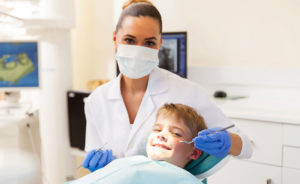
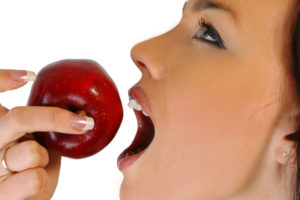
Besides the bleaching procedures, you have the option to choose other whitening methods that we listed down below.
However, you should know that there are other dental problems that might interfere with your whitening success.
For instance, you need to treat cavities prior whitening because those whitening agents will pass through the decayed spots in your teeth and will reach the inner parts where you have the yellow, discolored roots.
They will make the situation worse as the whitening products will not whiten them no matter how many times you use them.
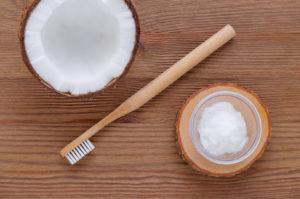 Teeth whitening kiosks
Teeth whitening kiosksTeeth whitening spots can be found in most malls and salons but practice showed that they can be highly risky places to have your teeth whitened, thus are getting banned in many countries.
This is because the staff working only look professional and trained, but in reality are average people who only had a basic training, not suitable for the chemicals they are using and the risk and damage they might cause to your teeth and gums.
They aren’t licensed to practice these sort of things and shouldn’t be trusted with your teeth health.
Rinses with teeth whitening properties can be found in all well-supplied markets and pharmacies these days, however, they are nothing more than mouthwashes with antiseptic properties.
While they are the best methods to get a fresh breath and reduce the level of dental plaque, rinses only temporarily lighten up the color of your teeth for a level or two while protecting against gum diseases.
Since they have whitening properties, rinses might contain ingredients like hydrogen peroxide so you need to check in case you are allergic or just precautious about using this bleaching agent.
These rinses are to be used 2 times per day after brushing your teeth by gargling or holding it in. The results should be seen after 10 to 12 weeks. This is probably something you would want to come faster but it’s slow because it comes in contact with your teeth for less than 2 minutes each time and is diluted with water and saliva.
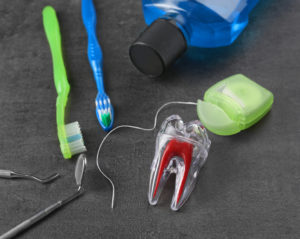 Teeth whitening home kits
Teeth whitening home kitsAs another way to whiten teeth, home kits can be purchased in pharmacies as strips with gel included and a tray-based system.
They work better than whitening rinses but still produce modest results at best.
While they whiten up the enamel of the teeth, if you use them too much too often they will cause irritations mild or severe to your teeth and might also erode the tooth enamel since they contain acid as one of the main ingredients.
This is why you always need to read labels and follow the -how to use- instructions.
Just as with whitening rinses,
it takes time to see real effects of whitening when using toothpaste.
They do claim confidently to remove yellowness and staining but in reality, they come in contact with your teeth for less than 2 minutes twice a day.
Plus they get diluted with saliva and water which makes things even harder. So while it’s a nice option to use, you shouldn’t put your faith in it too much.
OTHER THINGS TO HAVE IN MIND WHEN WHITENING YOUR TEETH:
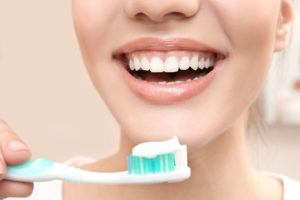
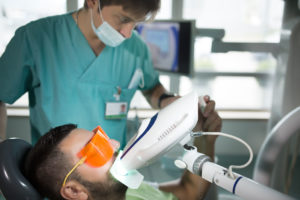

Through your life, you routinely chew your food and while the dentin remains intact, millions of microcracks are occurring in the enamel that in time are filling with debris that causes stains.
This at the end results in a dull and lackluster look of your teeth. The teeth whitening of any kind, professional in-office or at-home, remove these stains and debris from the tiny cracks on your teeth which then remain open and exposed to new food attacks. Some of them will be quickly mineralized by your saliva and some again filled with debris.
After getting to know the basics of the bleaching and whitening of the teeth, and how stains appear, you may have chosen the professional whitening as the way to improve your teeth color and smile overall.
In this case, here is everything you need to know about teeth whitening.
To start off with the professional in-office teeth whitening process, the dentist will first examine your teeth to see if there are some bridges or any artificial dentistry work that should not be whitened.
He will ask about your habits and if you smoke, drink a lot of colored alcohol like red wine or coffee, tea and so on. This is important in order to select the best whitening option for you.
He or she then will take a photo of your teeth in order to monitor the changes in color that are taking place with each teeth whitening treatment.
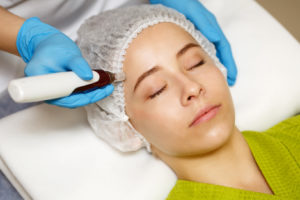 Next step is the removal of the substances you have on your teeth as a film of bacteria from food that contributes to further staining.
Next step is the removal of the substances you have on your teeth as a film of bacteria from food that contributes to further staining.
Once this layer has been removed, the whitening process is safe to start. The dentist when bleaching your teeth will apply a strong solution of hydrogen peroxide, stronger than you would normally use in your at-home teeth whitening kits with a proprietary use of a special light to accelerate the tooth whitening process.
Professionals use a mouthguard specially customized for you to help protect your gums from the damaging properties of the hydrogen peroxide.
This is why the professional whitening is the safest and the most efficient way to lighten the color of your teet.
For the enhancement of the whitening, lasers are oftentimes used which is why the professional whitening costs more money than over-the-counter products and kits. Clinical studies have shown that 96% of the people who used bleaching as a way to remove stains and whiten their teeth, have had experienced whitening effects and were satisfied immensely.
However, people who underwent the whitening procedure because of other types of stains like trauma or medications (too much tetracycline or fluoride – fluorosis) did not see as reliable results as the previous group.
Namely, there are two types of teeth bleaching that are mainly and most commonly used as professional in-office procedures.
Vital and non-vital whitening, depending on your dental status. If you want to whiten teeth that have live nerves than your dentist will use vital whitening, whereas if you have teeth with dead nerves (root-canal treatment performed) that need to be whitened, your dentist will use the non-vital way to lighten up the color of your teeth.

Teeth whitening with the vital procedure is when a hydrogen peroxide containing gel is directly applied to the tooth surface.
Because you are doing the whitening in office, your dentist will boost and enhance the whole process by using a special light or a laser that will activate the gel (by light or heat) and make it happen faster. This treatment will last somewhere between 30 and 90 minutes with 1 to 3 appointments in order to read the desired whitening.
Numbers vary in all patients because they are closely related to the stains, what caused them and how white you want your teeth. If after few visits your teeth are still badly colored, they might suggest you continue the bleaching process at home for few more weeks with a chemical specially prepared to your own needs.
Your dentist will also get impressions of your upper and lower teeth in order to make custom mouthpieces that fit you to save your soft tissue for the bleaching gels.
This is why it is vital for this mouthpiece to fit well. You fill each of the given mouthpieces with the bleaching gel your dentist provided you with and wear it for few hours each day. Within a week or so you should be able to reach your desired tooth color, however, you may need to use the gel for up to 4 weeks or even longer, depending on the nature of your stains.
All in all, your doctor will advise you best.
This is why whitening products over the counter are weaker. They don’t contain the same chemicals the whitening agent given by your dentist does. So they take longer and some people don’t even see any results.
Also, damages or irritations are more likely to appear when using over the counter whitening products because over-the-counter mouthpieces fit less securely than those in-office and there is no one to assist or help and protect your soft tissue in the mouth from the damaging properties of the chemicals used.
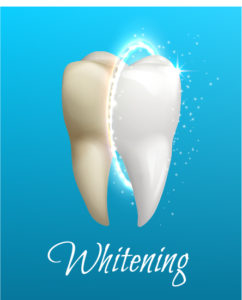 Non-vital whitening:
Non-vital whitening:Many people nowadays have root – canals did on their teeth where their nerves have been removed and dead so those teeth cannot any longer be treated as live-nerved teeth are. This means that whitening or bleaching has to be done differently.
This is why the non-vital whitening was invented and is now done to improve the appearance of those teeth that their stains come from the inside of the tooth.
The dentist fills the empty canal of your tooth with a bleaching agent and closes it off as a temporary filling that you need to wear for several days depending on the staining of your tooth. This may be needed only once, or it may need to be repeated until the tooth has reached the shade you desire.
All in all, no matter what type of teeth bleaching/ whitening process you have used, you need to know that it isn’t a permanent solution, as the stains will always find a way to return and layer your teeth on top. This is especially if you smoke or drink strong, staining foods and drinks like green and black tea, red wine, and coffee.
In this case, the staining will return in under a couple of months. However, if you are consistent to avoid the above – mentioned sources of staining, then you won’t need another bleaching procedure in the next 6 to 12 months.
After a while, if you see stains coming back you can re-whiten your teeth with an in – office or at – home procedure. This is why it’s best to keep those custom-made mouthpieces and whitening gel so you can repeat the treatment whenever you need to. This will also save you a lot of money you would normally spend if you are visiting dentists and buying bleaching gels.
However, you need to consult with your dentist about your whitening schedule because doing it too often might hurt the quality of your teeth overall.
Another perk of professional whitening is that you are able to visit your dentist for a follow-up treatment to check your teeth status, or because you are experiencing certain soreness in your gums, or if they turn white.
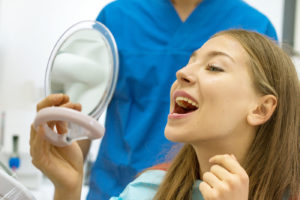
If after all, you have read you decided that you want to wait a little longer and postpone the teeth bleaching procedure for a while for some reason.
Then you might want to know how to maintain the health and naturally shade up to your teeth without the cost of money or pain in your own home.
Remember that by feeding your body with lots of healthy foods that are also important for strong bones. You will be able to maintain the health of your teeth for a longer time as well.
Namely, just by omitting coffee, red wine, smoking and sugary drinks and foods you are more than a halfway there.
And also, doesn’t matter the age you are, your teeth will look forward to some daily brushing with a non-irritating, all-natural products.

Before giving you advice on what to use to naturally whiten your teeth, you need to know that when it comes to lemon juice and baking soda, for instance, you should not use them too much too often because of their acidic eroding properties of your white enamel.
While lemon juice is a great bleacher for stained clothes, you don’t want to use it on your teeth every single day because the acid will just open more holes and enlarge the old ones in your teeth, making them vulnerable to more staining and cavities.
To avoid the negative effects from the natural whitening remedies you need to start off slow using just a small amount of any product, follow closely the directions and pay close attention to the signs your body gives you that might be a sign of worsening.
So the ways to lighten up your teeth while leaving the enamel protected is by using apple cider vinegar, coconut oil for pulling, using activated charcoal, baking soda, and of course the most important 3 are eating a healthy diet, brushing and flossing each day.
Brush regularly
The best way to protect your teeth from more staining is to brush them after each meal. This is the most important step that requires a lot of patience and persistence but it does whiten your teeth but it’s a long-term slow process.
Healthy habits
Drinking large amounts of coffee, soda and tea will greatly stain your teeth over time. Cut down your sugar intake as well and consider stopping the habit of smoking. Cigarettes seriously darken your teeth. Try drinking more plain water – it is great for your body overall and for your saliva levels and teeth health in general.
Teeth whitening remedy: Baking Soda & Hydrogen Peroxide
Try mixing a small amount of hydrogen peroxide with a half a teaspoon of baking soda, just enough to make a paste that you can apply on your teeth and brush them thoroughly. This effectively removes any plaque from them.
This is a study to back up the usage of soda:
“Results from the five controlled clinical studies on over 270 subjects consistently demonstrate that baking soda dentifrices enhanced plaque removal effectiveness of tooth brushing to a significantly greater extent than the non-baking soda dentifrice products.”
And as far as the effectiveness of the hydrogen peroxide goes, it is worthy to mention that this is a substance that is considered the best antibacterial agent used for a complete mouth, teeth and gum cleaning of any germs that might be settled in your mouth.
If you want to omit the baking soda from the recipe you can do so freely. Use the hydrogen peroxide as a mouth rinse by mixing half hydrogen peroxide with half water, swish it around for a minute or so and spit it out. Make sure you throw away any hydrogen peroxide left because it will oxidize until the next time you use it.
Every time you want to use it you need to make a new mixture for optimal results. By rinsing regularly, the hydrogen peroxide will give you a fresh breath because it eliminates bacterial plaque thanks to its natural antiseptic/ antibacterial properties.
Hydrogen peroxide as it is has found its way into modern dentistry today one of which is the whitening of teeth.
After a lot of studies, it is now known that hydrogen peroxide protects against gingivitis and periodontitis. If you want to use the hydrogen peroxide & baking soda paste to naturally whiten your teeth, you need to follow some guidance rules to do this safely, because if you once damage your enamel it doesn’t grow back and this will be greatly damaging to your teeth health.
First, you need to brush your teeth, as usual, thoroughly, reaching each side of the teeth. Then, make the paste runny and not gritty at all because baking soda is like a sandpaper, scraping the surface off of your teeth, seriously damaging your enamel.
To prevent this make sure you have enough hydrogen peroxide together with the baking soda mixed in. Rub it well for 30 seconds and then rinse.
For best teeth care to use a remineralizing toothpaste or a probiotic one that you can make at home. This is needed after the harsh properties of the baking soda and the hydrogen peroxide.
Teeth whitening remedy: Coconut oil pulling
Coconut oil is getting its well-worth attention and popularity when it comes to cleaning out bacteria from your teeth and whitening them up by removing the debris. It does take up to 8 weeks to see results but it is pretty promising when you see just how many people praise the results of oil pulling.
Simply take a full spoon of this oil and swish it and gargle it around your teeth and mouth from a minimum of 20 minutes each morning or each evening before going to bed.
Another option is to add few drops and brush your teeth with it after using the baking soda – hydrogen peroxide mixture. It will revitalize and re-mineralize your gums and teeth, soothing any irritations.
“Edible oil-pulling therapy is natural, safe and has no side effects. Hence, it can be considered as a preventive therapy at home to maintain oral hygiene.”
Teeth whitening remedy: Apple Cider Vinegar

Apple Cider Vinegar is an old remedy used for practically everything.
From pain in the joints to headaches, to weight loss and as a natural antibiotic cleanser of the teeth and gums as well.
The apple cider vinegar is able to remove even the most stubborn extrinsic stains off of your teeth but it does take a while.
However, when you take into consideration that is has no side effects and is very cheap, it is worth the wait. Smoking and coffee stains are a piece of cake for the apple cider vinegar.
People reported that apple cider vinegar works just as any commercial teeth whitener and after some time of usage you will look like you have had your teeth professionally whitened and cleaned.
If you are wondering why apple cider vinegar does work so well, the reason lies in the compounds in has: potassium, magnesium, acetic acid, enzymes and other probiotics that together kill germs – the harmful bad bacterial plaque – and at the same time enhance the growth of the good, probiotic bacteria.
It is a great re-mineralizer that has a natural acid in it which will break down the plaque, naturally whitening and remove any stains from your teeth.
However, the secret to success with the apple cider vinegar is in the patience and persistence, being constant when it comes to using it because it is a natural remedy after all and it does require an active user of at least one month continuously.
It is worth to mention that it is still some form of acid that requires precaution because the over usage can bring only damage to your teeth enamel, so don’t brush too much or too hard with it.
One-minute finger ribbing on your teeth is enough. Don’t forget to use a non-fluoride paste or a gentle homemade one that will revitalize your teeth after each brush or rinse with the apple cider vinegar.
Teeth whitening remedy: Lemon peels
Citric foods are known to help whiten your teeth, but similarly to the apple cider vinegar, it is too much acid and you need to be careful with it.
These acidic foods are overall healthy for you so you should implement them more in your diets because they enhance the healthy juices in your stomach.
You can use the lemon peels together with hydrogen peroxide or alone and then do a hydrogen peroxide rinse for optimal results. It is very important to rinse with water afterward so you stop the eroding process and protect your enamel.
 Teeth whitening remedy: Strawberries
Teeth whitening remedy: Strawberries
Strawberries are getting their fair share of attention when it comes to teeth whitening.
Who’d had thought that this delicious juicy fruit not only helps you improve your immune system and health but it also whitens your teeth immensely? Simply mash up 2 to 3 strawberries and apply this mixture to your teeth.
Rinse it well afterward and do this 3 to 4 times per week.
Why strawberries you might wonder? Well, they are packed with beneficial antioxidants and an array or other compounds highly beneficial to your overall health.
They help stop free radicals thus destroying any bacteria that might be staining your teeth as we speak.
However, it isn’t only strawberries or apple cider vinegar, or hydrogen peroxide or baking soda that can help you preserve the health of your teeth. It is the quality of your diet and lifestyle combined.
In order to get strong, nourished, pink gums and healthy white teeth here are some other foods to implement into your diet more often and stop the signs of teeth aging:
Magnesium – (high foods: leafy green veggies, apples, and pears), Mushrooms, Celery, Sweet potatoes, Carrots, Squash, Nuts: ( mostly walnuts, Brazilian and almonds)
Teeth whitening remedy: Activated Charcoal
Activated charcoal is a product that has a high absorbing property that traps toxins from inside the body, flushing them out from the system. It is used as a facial cleanser as a mask against blackheads and acne and it is now used to whiten your teeth as well.
Activated charcoal absorbs plaque and the microscopic debris that causes staining in the first place. To use it as a natural whitener you should wet a toothbrush and put some powdered activated charcoal on it.
Brush your teeth thoroughly as you normally would especially in the areas where teeth are mostly stained. Rinse well until what you spit is clear because otherwise, it means that you still have charcoal left somewhere in your mouth. You need to do this 2 to 3 times per week.
NOTE: Avoid using the activated charcoal if you have any crowns, porcelain veneers or caps installed in your mouth because it will turn them dark without the possibility to whiten them with anything afterward. It works on natural bones only – your teeth.

Even though medicine progressed so much in terms of removing stains off of teeth, it is still unclear as to why stains appear in the first place.
Namely, the enamel is coated with pellicle and has a net negative charge which is permitting the positive ions to adhere tooth surfaces.
So the ions from food and beverages that contain tannins and chromogens such as nickel, copper, as well as iron, attach themselves to the negatively charged pellicle-coated enamel which then causes the dental stains and discolorations.
When it comes to in-office, professional teeth whitening procedures, there is no doubt that they work and will lighten the color of your teeth at least by one shade up, if not more.
However, when it comes to at-home whitening kits, there are controversial and contradictive observations, reports and studies.
Namely, by using 10% carbamide peroxide as an at-home technique, people reported whitening in their teeth by up to 2 shades. No bad effects on the hard or soft tissue (gingiva – gums) were reported, and people got no bad taste or odor.
However, in-office procedures are preferred by doctors and patients because the whole process can be controlled and monitored closely and they are able to react to time if allergies or irritations appear.
Even with this, at-home treatments are getting more and more popular because they are simple to use by everyone, and they save you a lot of time and money.
People are often impatient and want to know everything about the process before it happens.
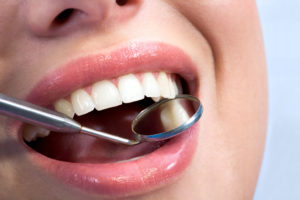 But you should know that patience is key here because no one can know or determine beforehand the degree of whitening or lightening that will be achieved in your teeth and the number of treatments required to achieve it.
But you should know that patience is key here because no one can know or determine beforehand the degree of whitening or lightening that will be achieved in your teeth and the number of treatments required to achieve it.
This is because the dentists cannot predict the type of stains you have and how they will respond as well as how long will the effects last on you.
If you force and overdo this process of whitening you might get a rather chalkier and dull-looking teeth that won’t look great after the process. The tetracycline stains will appear lighter but not necessarily whiter.
If you have brown-orange or yellow stains on your teeth and you are above 30 years of age, your stains might be easily removed, easier than the same ones in teenagers and 20-something adults.
The blue-gray staining in people of any age is the hardest to eliminate and the darker stains especially caused by tetracycline have been reported as impossible ones to completely remove.
Speaking of efficacy, it may be unrealistic to say that teeth will remain shiny and naturally white until old age if you take proper care of them, but there are certain things and practices you can put into action from today on to slow down the teeth discoloration process at least.
And when it comes to the permanency of teeth whitening, you should know that these bleaching and whitening are unlikely to be permanent and follow-up treatments are necessary for the period of 1 and 3 years.
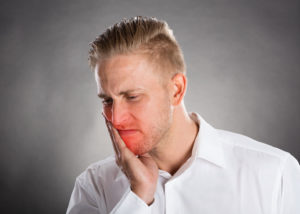
So far, statistics show that teeth whitening procedures don’t cause any serious damage and side-effects to people’s hard or soft tissue, and the only thing patients feel is more sensitive teeth and gums for a short period of time.
Also, a mild gum irritation is highly possible, but it usually goes away after few days. When you have this irritation, however, you should avoid sour foods like lemon and other fruits and you should be extremely careful of hot meals.
Also, you may experience a white line on your gums that will probably fade away after few days, and you will be very sensitive to cold food and drinks.
Another thing you might experience is a sore throat and a slight discomfort in the gums like they are pulling up.
These causes of sensitivity and irritation of your gums and teeth are the reason why people with overly sensitive teeth or gum disease or worn tooth enamel are forbidden to use bleaching as a procedure.
Other not suitable candidates for teeth whitening are pregnant women because the effects of the harsh whitening materials used aren’t still known for the development of the fetus, so it’s best if they postpone this whole process for after they deliver.
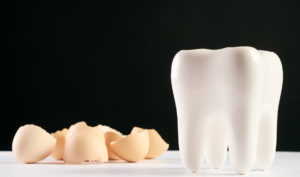 People who are about to have certain fillings in their front teeth are also advised to avoid teeth bleaching for after the cavities have been filled up because in contrary the bleaching agents will go inside the cavities holes and will cause a lot of pain.
People who are about to have certain fillings in their front teeth are also advised to avoid teeth bleaching for after the cavities have been filled up because in contrary the bleaching agents will go inside the cavities holes and will cause a lot of pain.
People who are allergic to peroxide mustn’t use teeth bleaching products of any kind and women who are breastfeeding as well.
Children aren’t allowed to undergo a tooth whitening process until they have their pulp fully formed because they have more sensitive teeth than adults.
Additionally, certain people have reported that they experienced:
With these being listed, if you experience any longer than a week or 10 days, you need to pay a visit to your doctor in order to soothe your soft tissue so further erosion doesn’t take place.
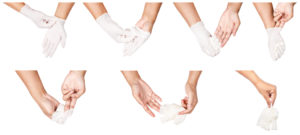 Infection control techniques
Infection control techniquesIt is necessary for us to mention and underline the importance of in-office teeth whitening procedures. This is because the dental staff members are trained how to work with techniques that are free of infections according to the guidelines of the Center for Disease Control and Prevention.
They are trained to change examination gloves and disinfect their tools and the working surface each time a new patient comes.
Your dentist will talk with you about the most suitable whitening procedure that is right for you. The “chairside bleaching” is considered to be most effective but will require more than one appointment and will cost more.
All in all, having white and bright teeth may seem like a great thing, but nourished, healthy smile is more important. This is why working with a dentist in order to whiten your teeth is better for your overall health.

Bleaching and whitening as you know them, they aren’t permanent in any case.
Once the enamel of the teeth is naturally eroded from chewing foods those micro holes will just keep on filling with organic debris and there is nothing you can do about it.
So if you whiten or bleach your teeth the results should last anywhere from 4 months to 1 year after which you need to repeat the process all over again.
However, even in between the period of 4 months to 1 year, you might need to get touch ups done, especially if you continue smoking and consuming staining food and beverages.
Also, the length of the whitening effect depends and is closely related to the condition of your teeth, which whitening/ bleaching procedure you have used and how good your oral hygiene is, of course.
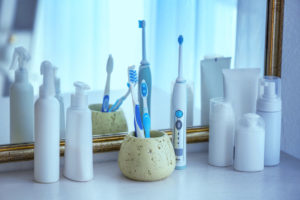
While having your teeth whitened and lightened can be nice and looks great, you should go overboard and turn the practice into an obsession – borderline addiction.
“There are people who can never get enough. I’ve had situations where people have needed root canals because they’ve overbleached, where tissues were damaged. You can wear away some of the enamel and your teeth will become translucent and unnatural. They’ll become blue or blue-gray.”
Dr. Irwin Smigel – American Society for Dental Aesthetics President
There is strong evidence that points out to severe damage to the teeth by destroying enamel from constantly using teeth-whitening products.
For instance, the whitening strips erode the enamel in time and cause too much sensitivity to hot, cold and acidic foods. To avoid this from happening to you, you should avoid using over – the – counter teeth whitening products that are acidic, containing some form of acid among their ingredients.
The bottom line of all this is that you should use whitening strips and in-office methods in moderation combined with natural ways to take a better care of your teeth and whiten them without causing damage. There are natural methods you can read below.
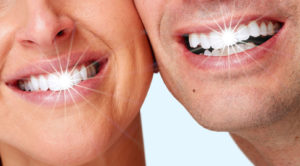
Personal outer appearance is extremely important nowadays in society, and often people would do everything to feel better about themselves.
White teeth are one of the first requests people make of dentists, wanting their smiles enhanced.
Bright, healthy smiles are referred to as “powerful” by many advertising experts in commercials, no wonder people fall prey to them.
The quality of a person’s interactions with society and with other people depends on their looks, latest psychological research shows.
Good looks are also a very important aspect of the nonverbal communication because the way people look affects how they see themselves thus how they think and behave and how they attract other people as well.
After all, it is known that physical attractiveness and positive self-evaluation have been correlated as connected positively.
This is why whiter, shinier teeth are something that is searched for a lot by people everywhere and is only logical that the medicine has developed itself in this field drastically.
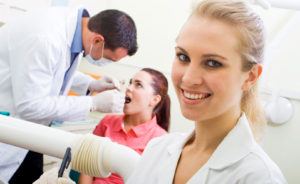 Here are some dentist – recommended tips to take care of the health of your teeth:
Here are some dentist – recommended tips to take care of the health of your teeth:
– Brush your teeth 2 to 3 times per day with a fluoride-free toothpaste
– Cut down the sugary foods and drinks
– Visit your dentist regularly
What can I expect after the treatment of teeth bleaching?
If you have just had a teeth bleaching or whitening treatment you should expect more sensitive teeth and irritated gums, but these are usually gone in the first week or so.
You should avoid hot and cold foods at this time, tobacco smoking or be chewing and staining beverages and foods in the first 10 days.
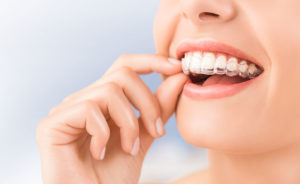
Although it is well-documented that teeth can be whitened and bleached with no serious damage, there is a lack of consensus in much of the research and results as many areas of concern haven’t been questioned properly.
What is sure is that teeth bleaching is needed if a person wants to change the shades of their teeth, but many scientists cannot agree on how long should the intervals of off time be in-between the bleaching treatments.
Although clinically insignificant, there are changes in soft and hard tissue reported that might be restorative in the long run.
However, all the changes have been seen to be reversible so bleaching is still practiced without a problem. All in all, long-term human studies are needed in order to determine the possible risks.
For now, it is known that all the negative effects hydrogen peroxide has on soft and hard tissues are reversible if given enough time between treatments to get better.
As long as your dentist determines that you don’t suffer from cervical erosion or enamel cracks, you have intact restoration margins and you have a healthy periodontium and you aren’t a smoker, he or she will gladly bleach your teeth and guarantee you great results.
So as long as you follow instructions carefully and don’t overuse the whitening trays, especially not overnight while sleeping, you are safe to whiten your teeth. Just make sure to visit your dentist if you feel any negative changes.